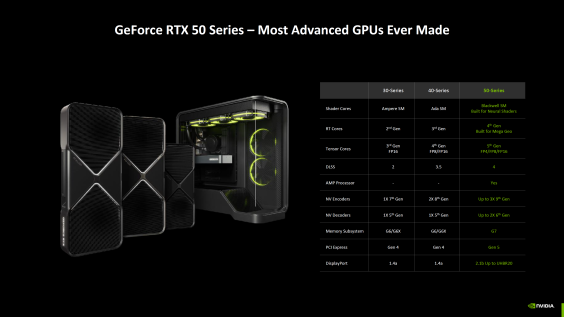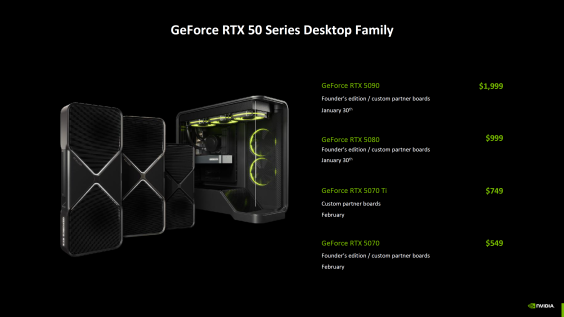NVIDIA confirmed the native RT uplifts of its RTX 50 GPUs, RTX 5090, 5080, 5070 Ti, & 5070, without the use of DLSS which averages around 15-30%.
NVIDIA GeForce RTX 50 Gaming GPUs Are 2x Faster Than Predecessors Only With DLSS 4, Native RT Uplifts For RTX 5090, 5080, 5070 Ti & 5070 Average Around 15-30%
During its Editor’s Day 2025 at CES, NVIDIA confirmed additional performance metrics of its next-generation GeForce RTX 50 GPUs. These new cards include the RTX 5090, 5080, 5070 Ti, and 5070.
According to NVIDIA, the 2x performance figures that were presented during the CES 2025 keynote are only possible using the new DLSS 4 MFG (Multi-Frame Generation) technology. Without DLSS 4 or any DLSS upscaling technique, the native performance uplifts are not as huge, but given the new technologies offered by the company in the same price ranges, especially the RTX 5070 and 5070 Ti, the cards are likely to fare well in the gaming segment, especially since the reliance on upscaling and frame-generation models is becoming a huge thing in the gaming industry.
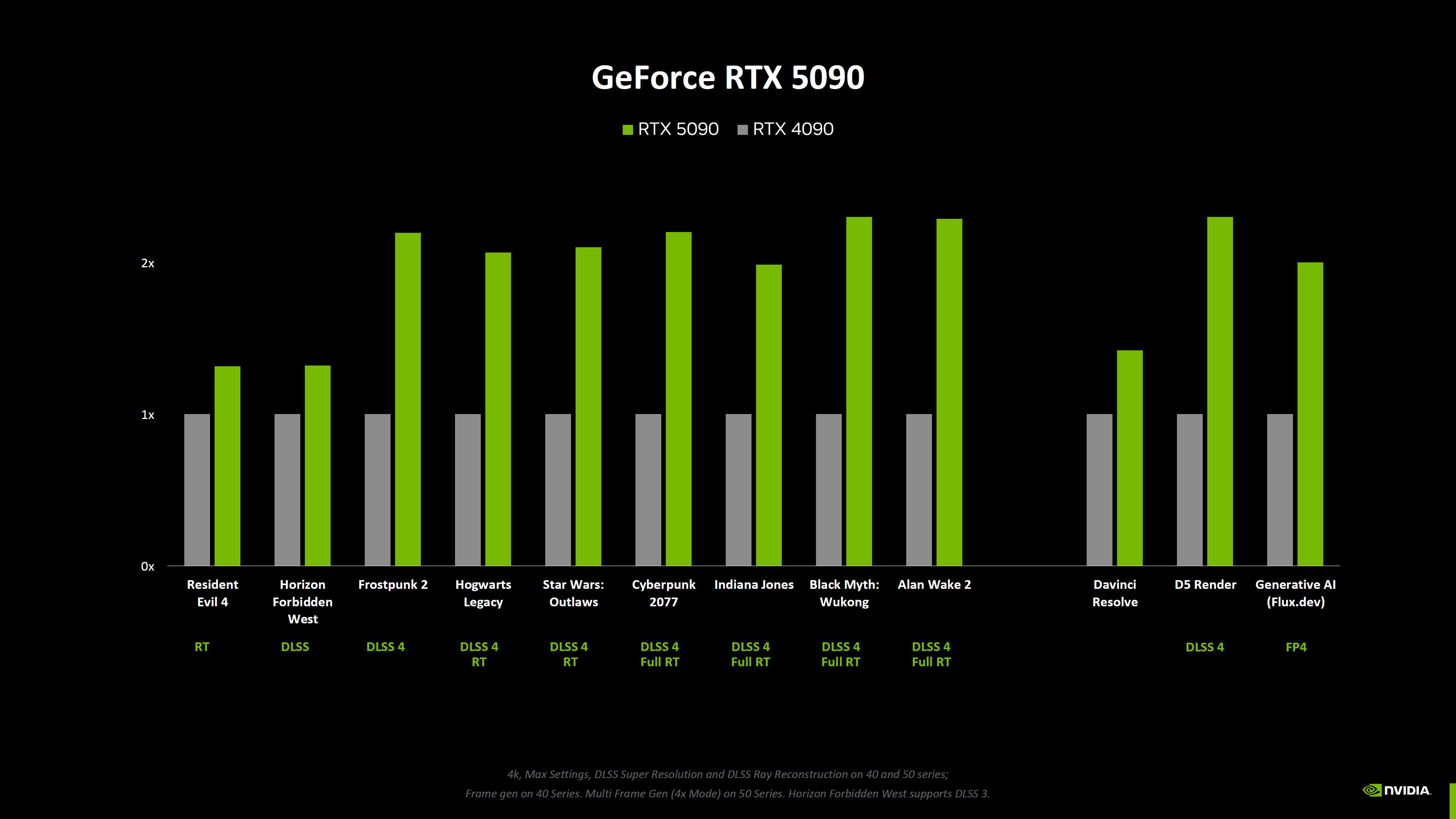
Starting at the top, NVIDIA officially stated a 30% performance uplift in native RT gaming scenarios without DLSS involved for the GeForce RTX 5090 and 15% for the GeForce RTX 5080.
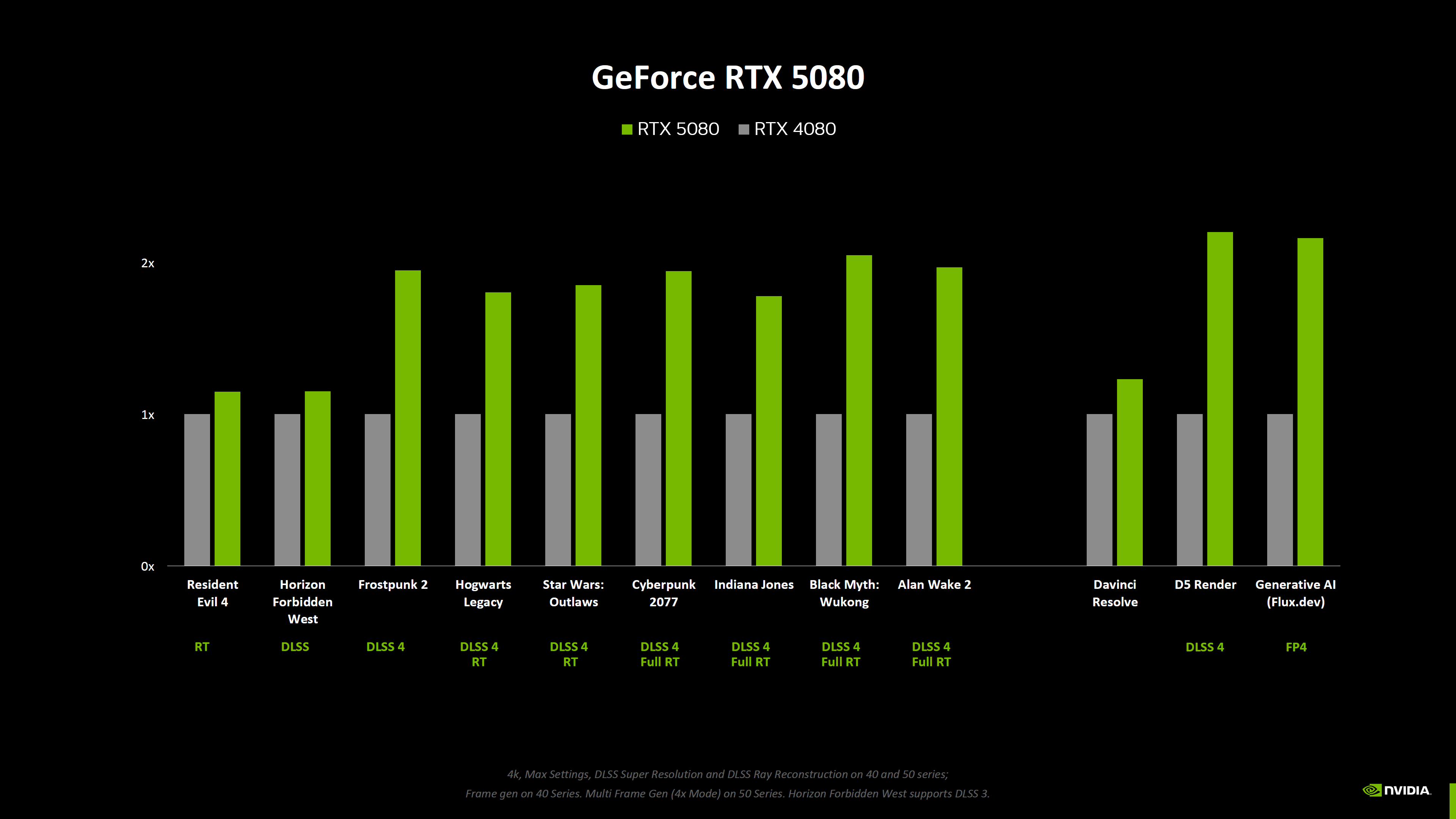
Now these gains might not sound like much, since we got some massive uplifts in the previous Ada generation, but with DLSS 4 and support for upcoming tech such as Neural Rendering and Neural Shading along with new RTX capabilities like RTX Fur, RTX Hair, and RTX Skin, there should be a good enough reason to get a new RTX 50 GPU.
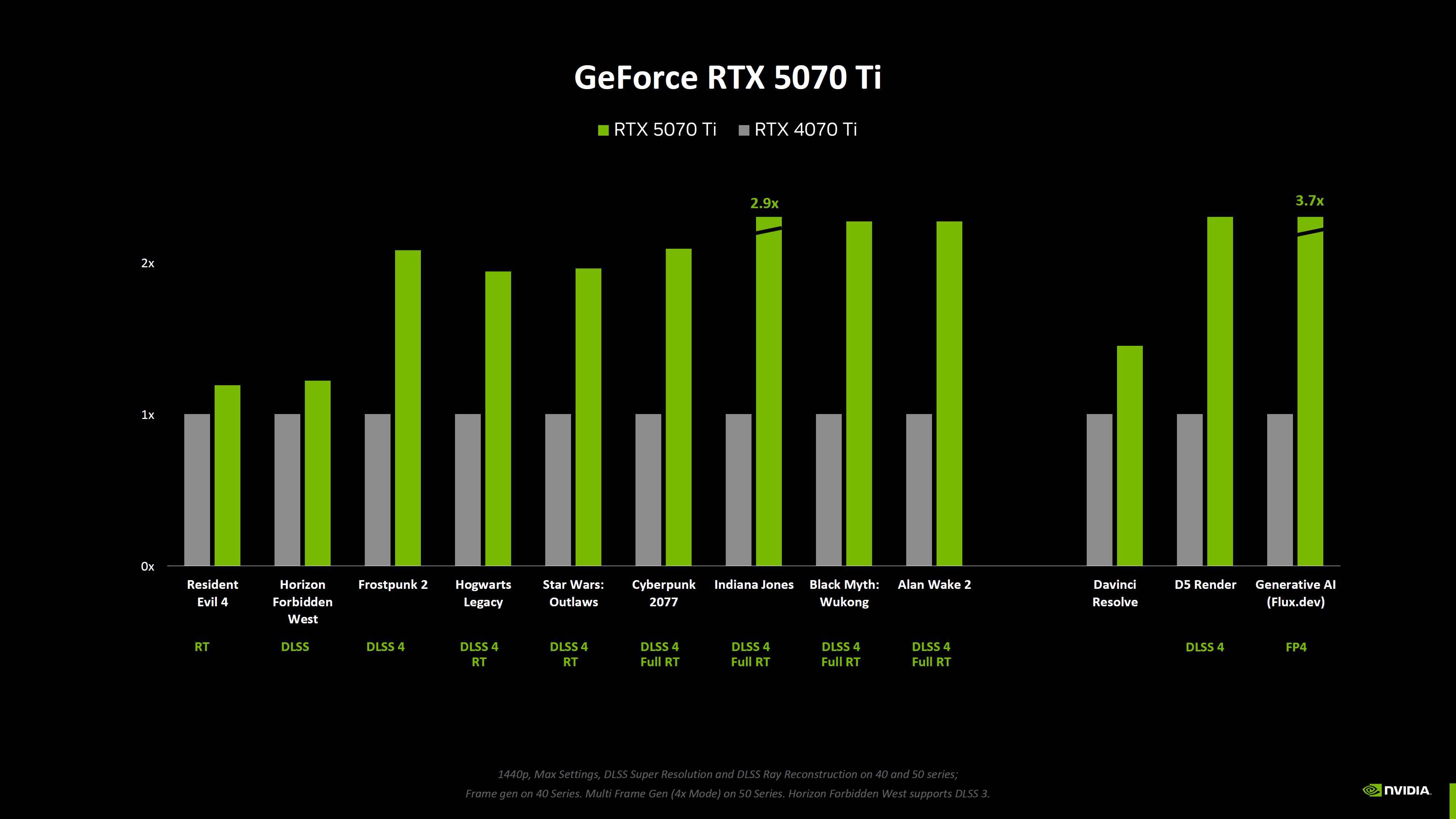
As for the other two cards, the GeForce RTX 5070 Ti and GeForce RTX 5070, NVIDIA claims a 20% performance uplift in the same native RT (Non-DLSS) gaming scenarios versus the RTX 4070 Ti & RTX 4070.
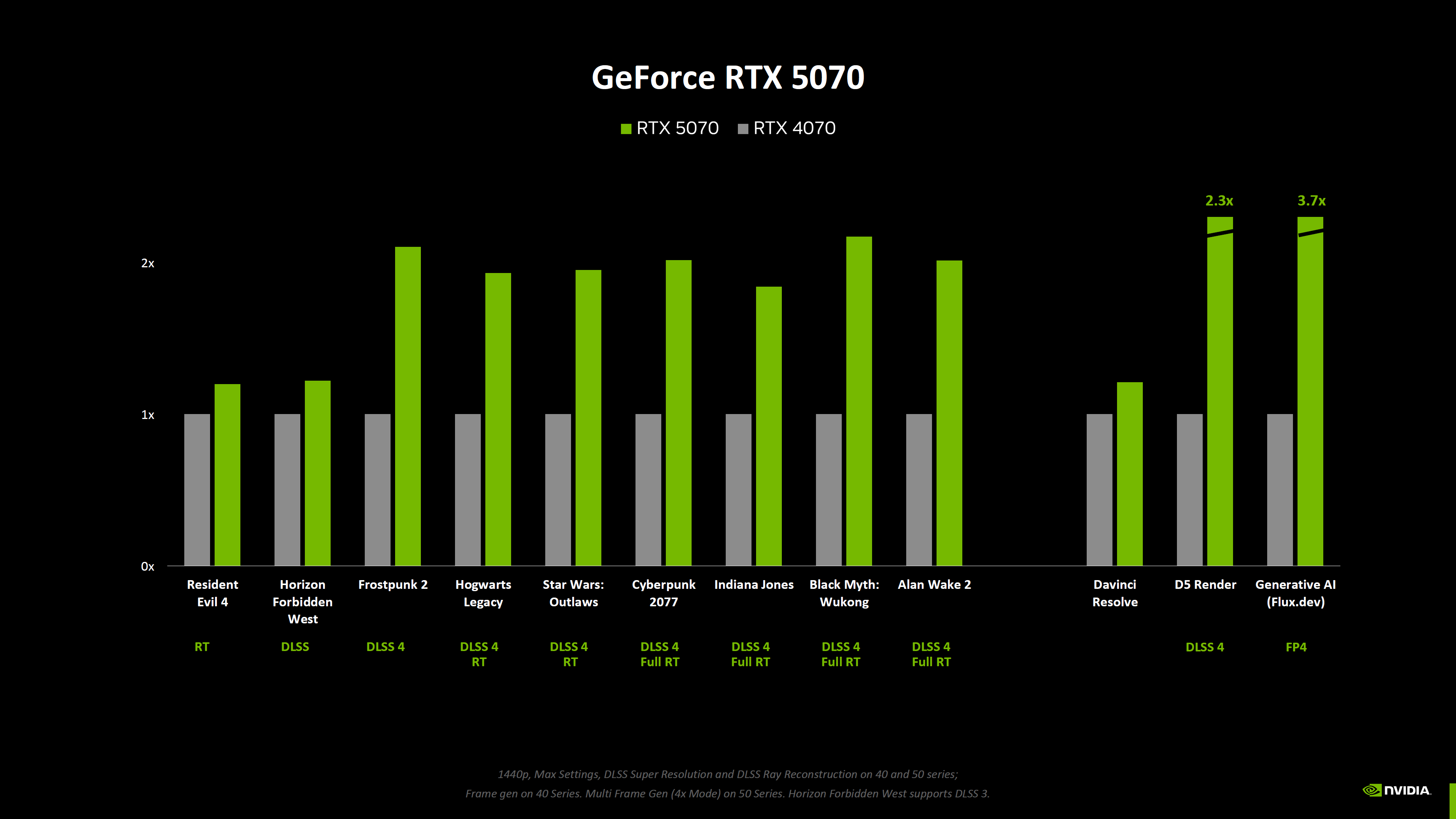
In terms of product positioning, all four cards are designed for 4K gaming in mind with DLSS 4 but natively, you can expect the RTX 5090 and RTX 5080 to be the best for those scenarios. The GeForce RTX 5070 Ti and RTX 5070 should be great for native 1440p gaming.
- GeForce RTX 5090 vs RTX 4090 (Native RT / No DLSS) = +30%
- GeForce RTX 5080 vs RTX 4080 (Native RT / No DLSS) = +15%
- GeForce RTX 5070 Ti vs RTX 4070 Ti (Native RT / No DLSS) = +20%
- GeForce RTX 5070 vs RTX 4070 (Native RT / No DLSS) = +20%
The RTX 5090 is equipped with a massive 32 GB memory capacity, making it a potent solution for high-resolution content creators and gamers, especially those running the latest QD-OLED DP 2.1 monitors, while the RTX 5080 and RTX 5070 Ti also come with a respectable 16 GB GDDR7 memory capacity, while the RTX 5070 aims for the mainstream high-end segment with 12 GB GDDR7 memory.
The NVIDIA GeForce RTX 5090 will hit shelves on the 30th of January along with the RTX 5080 for an MSRP of $1999 and $999 US, respectively, while the RTX 5070 Ti and RTX 5070 will be available in February for $749 and $549 US, respectively.
NVIDIA GeForce RTX 50 GPU Specs (Preliminary):
| Graphics Card Name | NVIDIA GeForce RTX 5090 | NVIDIA GeForce RTX 5080 | NVIDIA GeForce RTX 5070 Ti | NVIDIA GeForce RTX 5070 | NVIDIA GeForce RTX 5060 Ti | NVIDIA GeForce RTX 5060 |
|---|---|---|---|---|---|---|
| GPU Name | Blackwell GB202-300 | Blackwell GB203-400 | Blackwell GB203-300-A1 | Blackwell GB205-300-A1 | Blackwell GB206? | Blackwell GB206? |
| GPU SMs | 170 (192 Full) | 84 (84 Full) | 70 (84 Full) | 50 (50 SM Full) | TBD | TBD |
| GPU Cores | 21760 (+33%) | 10752 (+11%) | 8960 (+16%) | 6144 | TBD | TBD |
| Clock Speeds | 2.41 GHz | 2.62 GHz | 2.45 GHz | 2.51 GHz | TBD | TBD |
| L2 Cache | TBD | TBD | TBD | TBD | TBD | TBD |
| Memory Capacity | 32 GB GDDR7 (+33%) | 16 GB GDDR7 (0%) | 16 GB GDDR7 | 12 GB GDDR7 | 16 GB GDDR7 | 8 GB GDDR7 |
| Memory Bus | 512-bit (+33%) | 256-bit (0%) | 256-bit (0%) | 192-bit (0%) | 128-bit (0%) | 128-bit (0%) |
| Memory Speed | 28 Gbps | 30 Gbps | 28 Gbps | 28 Gbps | 28 Gbps? | 28 Gbps? |
| Bandwidth | 1792 GB/s | 960 GB/s | 896 GB/s | 672 GB/s | 448 GB/s | 448 GB/s |
| TBP | 575W (+27%) | 360W (+12.5%) | 300W (+10.5%) | 250W (+14%) | TBD | TBD |
| Power Interface | 1 12V-2×6 (16-Pin) | 1 12V-2×6 (16-Pin) | 1 12V-2×6 (16-Pin) | 1 12VHPWR (16-Pin) | 1 12VHPWR (16-Pin) | 1 12VHPWR (16-Pin) |
| Launch | January 2025 | January 2025 | February 2025 | February 2025 | March-April 2025 | March-April 2025 |
| Price | $1999 US | $999 US | $749 US | $549 US | TBD | TBD |

